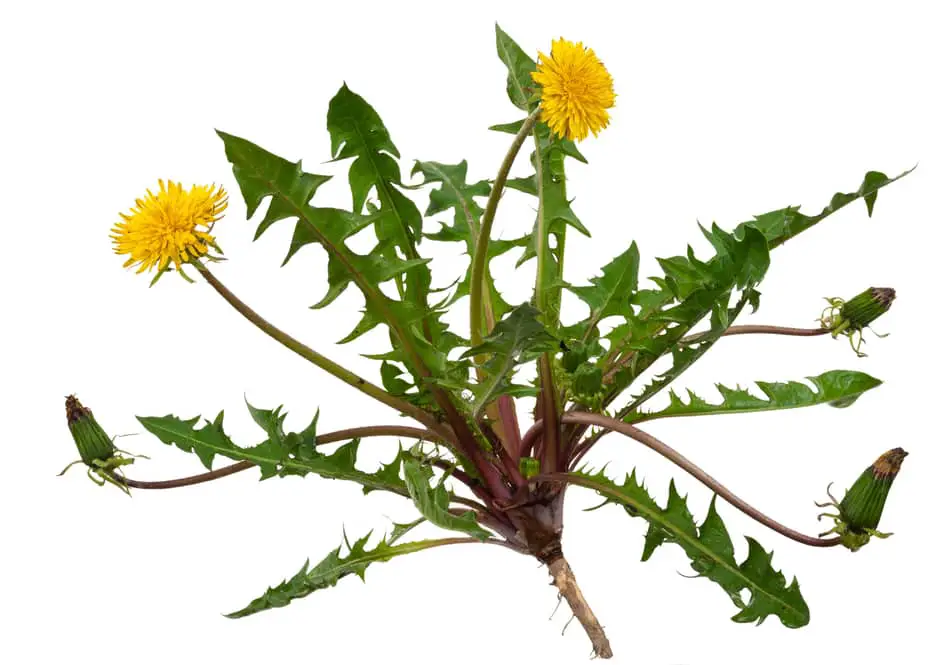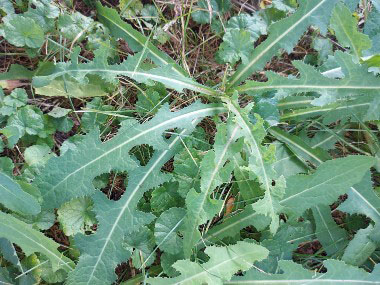
Dandelion greens are a delicious, nutritious superfood. In my article on the healthiest salad greens, dandelions come in first place nutritionally based on their highest amounts of antioxidants, iron, vitamin K, beta carotene, and lutein/zeaxanthin among all greens tested.
Which begs the question: can you eat the dandelions growing in your yard? You can indeed the dandelions in your yard, or anywhere you find them outside, if you choose them carefully. Wild-growing dandelions have a high likelihood of having been exposed to herbicides or pesticides. Even if you don’t use these chemicals in your lawn, if your neighbors do, your yard could still be contaminated.
It is probably best to buy dandelions from the grocery store, as they will have been cultivated specifically for human consumption.
How to Forage for Dandelions
If you are certain that the dandelions you find outdoors are safe from chemicals and pollution, here are some tips for collecting them:
- Don’t forage them from suburban lawns, parks, or the sides of roads or near railroad tracks, where pollution is likely.
- Choose younger plants, as the leaves will be less bitter than from older plants.
- Choose plants where you can see the identifiable yellow flower on a single, leafless, prickle-free stalk; that will ensure the leaves are not from a lookalike plant. Common lookalikes are sow’s thisltle and wild lettuce (AKA bitter lettuce) (see images below). These plants are also safe to eat, but are not dandelions and do not have the same nutritional profile.
- Wash them thoroughly; they may have been exposed to animals eliminating on or near them.

Are the Dandelions in My Yard the Same Species as Those in the Grocery Store?
The dandelions you find in the grocery store may or may not be the same species of dandelion growing in your yard. Increasingly, grocery stores are carrying a variety called”Italian Dandelions.” These are not dandelions at all; they are a type of chicory. But they look like dandelions and are safe to eat.
What are the Health Benefits of Dandelion Greens?
Dandelion greens are a great source of vitamins A, C, K and folate. They are also high in calcium, potassium and iron. They are high in antioxidants including lutein and zeaxanthin. They are also a good source of fiber. Read on for the benefits of dandelion tea, which uses the root.
What Parts of Dandelions Can You Eat?
It is safe to eat the leaf, flower and root of the dandelion. The only part you shouldn’t eat is the stem, which contains a bitter, milky substance that may cause stomach upset in large quantities. Fun fact: that white substance is latex, similar to what is found in the rubber tree plant. You can make tires out of the stuff!
How to Eat Dandelions
Try dandelion leaves in salad. They tend to be on the bitter side, so are often mixed in with other milder greens. Dandelion greens can also be cooked; stir them into soups or stews. Here are ten terrific, meatless recipes for using dandelion greens raw and cooked, from mindbodygreen.
The root is often used for dandelion tea. Dandelion tea is a diuretic, and it also supports liver detoxification by increasing bile production. I would buy dandelion tea as opposed to making it yourself, which is labor-intensive. To make it, clean the root well, roast and steep in hot water.
The flower heads look pretty in salad or floating in your dandelion tea. Another popular use of the flower heads is to include them in pancake batter. Before using, peel the green bases away from the flower heads.
How to Wash Your Dandelion Greens
Immerse the loosened leaves in a bowl or pan of cool water. Swish them around, and rinse until the water is clear.
Here is a helpful PDF information from Colorado State University’s Extension program on how best to clean fresh produce
Final Words
Foraging for your food is a growing trend. It’s an eco-friendly way to eat nutritiously and save money. If you want to try it out, dandelions are a great place to start, if you follow the tips in this article. Or buy them at the grocery store, preferably organic, for a great addition to your veggie diet.
Read all about the healthiest salad greens here.
Read about the healthiest pear variety here.
Learn what produce requires peeling here.
Resources
- USDA FoodBank
- The Antioxidant Food Table
- Clare BA, Conroy RS, Spelman K. The diuretic effect in human subjects of an extract of Taraxacum officinale folium over a single day. J Altern Complement Med. 2009 Aug;15(8):929-34. doi: 10.1089/acm.2008.0152. PMID: 19678785; PMCID: PMC3155102.
- https://www.mindbodygreen.com/0-18475/10-ways-to-eat-more-dandelion-greens-especially-if-youre-tired-of-kale.html.
- https://nifa.usda.gov/sites/default/files/resource/Guide%20to%20Washing%20Fresh%20Produce508.pdf.
- Cai L, Wan D, Yi F, Luan L. Purification, Preliminary Characterization and Hepatoprotective Effects of Polysaccharides from Dandelion Root. Molecules. 2017; 22(9):1409. https://doi.org/10.3390/molecules22091409.
